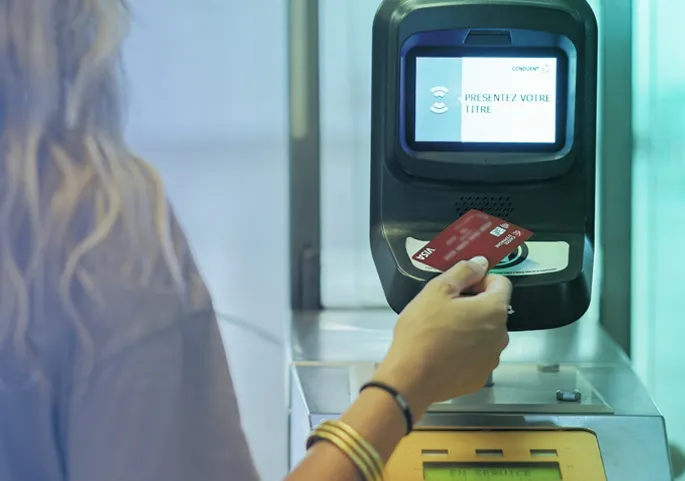Based on patented Xerox technology, Xerox Seamless has two key advantages. Firstly, the solution is universal. Designed independently of SIM cards and compatible with all mobile phone operators, it can be installed quickly and easily by both the transportation operator and the user while offering the same security guarantees as conventional contactless ticketing.
Secondly, Xerox Seamless removes barriers to people using an unfamiliar transport system. Tourists, for example, could easily access services without having to know about local ticketing conventions.
Between September and the end of June next year, 150 customers in the city of Valence will use the Xerox Seamless app on their smartphones to travel on the city’s buses, operated by Citéa for Valence Romans Déplacements (VRD), the local transport authority.
Xerox has installed Near Field Communication (NFC) tags on VRD’s local and intercity bus lines. The user first downloads the app onto their NFC-enabled smartphone, registers with Xerox Seamless, and then, to travel, taps their smartphone on any Xerox Seamless NFC tag. During the tap, the tag creates and stores an encrypted transaction and relays it to the smartphone. Constant network connection is not required - the transaction is transmitted when network connectivity is available.
Jo van Onsem, Group President, Xerox, will present further details on Seamless and the pilot during Thursday afternoon’s High-Level Round Table City-Industry collaboration sessions.
Xerox Seamless travel solution is piloted in France
Xerox is here at the ITS World Congress to highlight, among other things, the solution to two entwined challenges that today’s transportation operators face: attracting more passengers and making secure ticketless payment is a reality. Xerox Seamless is a new, disruptive model for public transport mobile payments and the company has announced that the city of Valence, in south- eastern France, is now piloting the solution.
October 7, 2015
Read time: 2 mins








